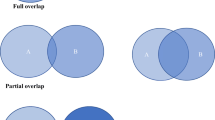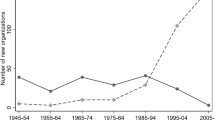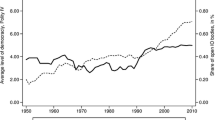Abstract
Surprisingly little research investigates a stark reality: the vast majority of today’s international intergovernmental organizations (IGOs) were crafted not by states alone, but with participation by international bureaucrats working in pre-existing IGOs. What explains this phenomenon? Drawing on international relations scholarship, this article develops predictions involving the capabilities of states, or a matter’s salience to states. The predictions are tested with a new and original dataset that captures, for the first time, variation in the roles that international bureaucrats play in the institutional design arena. Statistical analyses find that states’ need for expertise, as well as the design negotiations’ distance from high-politics, leave openings for international bureaucrats to enter institutional design processes. The findings enhance our understanding of institutional design, principal-agent relationships, non-state actors, and divisions of labor in contemporary global governance.

Similar content being viewed by others
Notes
For an exception, see Johnson and Urpelainen (forthcoming).
United Nations Secretariat. Composition of the Secretariat (A/65/350), available at: http://www.un.org/en/mainbodies/secretariat/.
UN Secretariat, available at: http://www.un.org/en/mainbodies/secretariat.
But see Ikenberry (2001) for a more nuanced view: that great powers do not always wield their power blatantly, but instead exercise restraint in order to convince less powerful states to cooperate.
The interests of international bureaucrats and states are distinctive, in the aggregate. Overall, international bureaucrats’ interests include the material security, legitimacy, and policy advancement of their IGO—these interests do not perfectly mirror the interests of states. But this does not mean that the interests of international bureaucrats and states can never overlap, nor does it rule out the possibility of exceptions among individuals. For example, an individual who has worked (or would like to work) as both an IGO employee and a government official may embrace the interests of her current institution most strongly, yet also consider the interests of her past or future institution. Nothing in the argument denies this. In the aggregate, the interests of international bureaucrats and states are expected to be distinctive—but not always mutually exclusive.
Sometimes international bureaucrats from more than one IGO seek to have input into the design of a new institution. For a relatively cooperative example, see the case study of the origins of the Intergovernmental Panel on Climate Change, in Johnson (forthcoming). For a relatively competitive example, see the case study of the origins of the Joint United Nations Program on HIV/AIDS, in Johnson and Urpelainen (forthcoming). Explaining variation between cooperative and competitive relationships remains a topic for future research into international bureaucracies.
Because the number of issues that are of direct importance to state survival is relatively small compared to the vast array of issues that do not immediately impact state survival, the article focuses on the former. This also permits deeper empirical investigations: in the quantitative analyses, it is then feasible to parse out high-politics issues into their sub-types, such as security/military/defense or governance/administration.
This universe does not include bodies deemed by the Yearbook’s compilers to be subsidiary or internal bodies (i.e., the Yearbook’s Type 2 is equal to k)—such as the ASEAN Committee on Education. (Yearbook of International Organizations. “Types of International Organizations.” Available at: http://www.uia.be.node/163992).
This is a relatively narrow definition of expertise, which is compelling for large-N statistical analyses because it facilitates an objective and replicable approach across many observations. However, for several detailed case studies capturing the reality that international bureaucrats can possess expertise that goes beyond a merely scientific or technological nature, see Johnson and Urpelainen (forthcoming).
Correlates of War Project (2008). “State System Membership List, v2008.1.” Available at: http://www.correlatesofwar.org/COW2%20Data/SystemMembership/2008/System2008.html.
These CLARIFY simulations use 90-percent confidence intervals. The baseline probability of international bureaucrats’ design involvement (calculated by setting all of the explanatory variables at their mean values) is 60 % for Model 1 and 61 % for Model 2.
This does not appear to be driven by multicollinearity among explanatory variables. Calculations of variance inflation factors (VIFs)—which describe the amount by which multicollinearity increases the variance of each variable—do not find problems of multicollinearity. None of the explanatory variables’ VIFs exceed the rule-of-thumb threshold of 10. Furthermore, the mean VIF is only 3, comparing reassuringly to the mean VIF of 1.0 that would result if there were absolutely no collinearity among variables (Gujarati 2003).
When the four models are re-run using (ordered) logit or linear regression instead of (ordered) probit, the main results persist.
Need for Expertise does retain statistical significance more often in ordered logit than in ordered probit models.
The results of robustness checks are discussed but not displayed here, due to space constraints.
From a theoretical standpoint, it is relatively unlikely that international bureaucrats’ participation varies markedly from one year to another, but more likely that it varies from one decade to another. From an empirical standpoint, degrees-of-freedom considerations make decade-controls more feasible than year-controls.
References
Abbott, K. W., & Snidal, D. (1998). Why states act through formal international organizations. Journal of Conflict Resolution, 42(1), 3–32.
Aggarwal, V. K. (Ed.). (1998). Institutional designs for a complex world: Bargaining, linkages, and nesting. Ithaca: Cornell University Press.
Andonova, L. (2010). Public–private partnerships for the earth: politics and patterns of hybrid authority in the multilateral system. Global Environmental Politics, 10(2), 25–53.
Banks, A., Muller, T., Overstreet, W., & Isacoff, J. F. (Eds.). (2009). Political handbook of the world. Washington, DC: CQ Press.
Barnett, M., & Coleman, L. (2005). Designing police: interpol and the study of change in international organizations. International Studies Quarterly, 49, 593–619.
Barnett, M., & Finnemore, M. (2004). Rules for the world: International organizations in global politics. Ithaca, NY: Cornell University Press.
Bauer, S. (2006). Does bureaucracy really matter? The authority of intergovernmental treaty secretariats in global environmental politics. Global Environmental Politics, 6(1), 23–49.
Bauer, S. (2009). The secretariat of the United Nations Environment Programme: Tangled up in blue. In F. Bierman & B. Siebenhüner (Eds.), Managers of global change: The influence of international environmental bureaucracies. Cambridge: The MIT Press.
Bierman, F., & Siebenhüner, B. (Eds.). (2009). Managers of global change: The influence of international environmental bureaucrats. Cambridge: The MIT Press.
Correlates of War Project. (2008). State System Membership List, v2008.1. Online, http://correlatesofwar.org
Cox, R. W. (1969). The executive head: an essay on leadership in international organization. International Organization, 23(2), 205–230.
Cox, R. W., & Jacobson, H. (1974). The Anatomy of Influence: Decision-Making in International Organization. New Haven, CT: Yale University Press.
Goodin, R. (Ed.). (1996). The theory of institutional design. New York: Cambridge University Press.
Gruber, L. (2000). Ruling the world: Power Politics and the rise of supranational institutions. Princeton: Princeton University Press.
Gujarati, D. N. (2003). Basic Econometrics, 4th edition. Boston, MA: McGraw-Hill.
Haas, E. B. (1964). Beyond the nation-state: Functionalism and international organization. Stanford: Stanford University Press.
Haas, P. M. (1990). Saving the Mediterranean: The politics of international environmental cooperation. New York: Columbia University Press.
Hawkins, D., & Jacoby, W. (2006). How agents matter. In D. Hawkins, D. Lake, D. Nielson, & M. Tierney (Eds.), Delegation and agency in international organizations. New York: Cambridge University Press.
Hawkins, D., Lake, D., Nielson, D., & Tierney, M. (Eds.). (2006). Delegation and agency in international organizations. New York: Cambridge University Press.
Ikenberry, G. J. (2001). After victory: Institutions, strategic restraint, and the rebuilding of order after major wars. Princeton: Princeton University Press.
Jacobson, H. K., Reisinger, W. M., & Mathers, T. (1986). National Entanglements in International Governmental Organizations. American Political Science Review, 80(1), 141–159.
Jervis, R. (1983). Security regimes. In S. D. Krasner (Ed.), International regimes. Ithaca: Cornell University Press.
Johnson, T. (Forthcoming). Institutional design and bureaucrats’ impact on political control. Journal of Politics.
Johnson, T., & Urpelainen, J. (Forthcoming). International Bureaucrats and the Formation of Intergovernmental Organizations: Institutional Design Discretion Sweetens the Pot. International Organization.
Keck, M., & Sikkink, K. (1998). Activists beyond borders: Advocacy networks in international politics. Ithaca: Cornell University Press.
Keohane, R. O. (1984). After hegemony: Cooperation and discord in the world political economy. Princeton: Princeton University Press.
Keohane, R. O., & Martin, L. L. (2003). Institutional theory as a research program. In C. Elman & M. F. Elman (Eds.), Progress in international relations theory: Appraising the field. Cambridge: The MIT Press.
Kiewiet, D. R., & McCubbins, M. (1991). The logic of delegation: Congressional parties and the appropriations process. Chicago: University of Chicago Press.
Kindleberger, C. (1986). The world in depression, 1929–1939. Berkeley: University of California Press.
King, G., Tomz, M., & Wittenberg, J. (2000). Making the most of statistical analyses: improving interpretation and presentation. American Journal of Political Science, 44(2), 347–361.
Koremenos, B., Lipson, C., & Snidal, D. (Eds.). (2003). The rational design of international institutions. New York: Cambridge University Press.
Lake, D. (1993). Leadership, hegemony, and the international economy: naked emperor or tattered monarch with potential? International Studies Quarterly, 37(4), 459–489.
Lipson, C. (1984). International cooperation in economic and security affairs. World Politics, 37, 1–23.
Lyne, M., Nielson, D. L., & Tierney, M. J. (2006). Who delegates? Alternative models of principals in development aid. In D. Hawkins, D. Lake, D. Nielson, & M. Tierney (Eds.), Delegation and agency in international organizations. New York: Cambridge University Press.
Martin, L. L. (2006). Distribution, information, and delegation to international organizations: The case of IMF conditionality. In D. Hawkins, D. Lake, D. Nielson, & M. Tierney (Eds.), Delegation and agency in international organizations. New York: Cambridge University Press.
Mathiason, J. (2007). Invisible governance: International secretariats in global politics. Bloomfield: Kumarian Press.
Mearsheimer, J. J. (1994/1995). The false promise of international institutions. International Security, 19(3):5–49.
Moe, T. (2006). Political control and the power of the agent. Journal of Law, Economics, and Organization, 22(1), 1–29.
Olson, M. (1971). The logic of collective action: Public goods and the theory of groups. Cambridge: Harvard University Press.
Pevehouse, J. C., Nordstrom, T., & Warnke, K. (2004). The COW-2 international organizations dataset version 2.0. Conflict Management and Peace Science, 21(2), 101–119.
Register of United Nations Bodies. http://esa.un.org/esaWeb/referenceService/registry/pgSelectBodiesByName.html
Reinalda, B., & Verbeek, B. (Eds.). (1998). Autonomous policymaking by international organizations. New York: Routledge.
Sandholz, W., & Zysman, J. (1989). 1992: recasting the European bargain. World Politics, 42(1), 95–128.
Schiavone, G. (2005). International organizations: A dictionary and directory (6th ed.). New York: Palgrave MacMillan.
Schweller, R. L., & Priess, D. (1997). A tale of two realisms: expanding the institutions debate. Mershon International Studies Review, 41, 1–32.
Shanks, C., Jacobson, H. K., & Kaplan, J. H. (1996). Inertia and change in the constellation of international governmental organizations. International Organization, 50(4), 593–627.
Strange, S. (1998). Why do international organizations never die? In B. Reinalda & B. Verbeek (Eds.), Autonomous policy making by international organizations. New York: Routledge.
Tomz, M., Wittenberg, J., & King, G. (2001). CLARIFY: Software for interpreting and presenting statistical results. Version 2.0. Cambridge: Harvard University. Available from: http://gking.harvard.edu.
United Nations Bibliographic Information System. www.unbisnet.un.org
United Nations Secretariat. Composition of the Secretariat (A/65/350). http://www.un.org/en/mainbodies/secretariat/
United Nations Treaty Series. www.untreaty.un.org
Vaubel, R. (2006). Principal–agent problems in international organizations. Review of International Organizations, 1, 125–138.
Weiss, T. G. (1982). The myth and reality of the international civil service. International Affairs, 58(2), 287–306.
Yearbook of International Organizations, 2007–2008. Online database of International Organizations. http://www.uia.be
Yearbook of International Organizations. Types of international organization. http://www.uia.be/node/163992
Young, O. (1989). The politics of international regime formation: managing natural resources and the environment. International Organization, 43(3), 349–75.
Zegart, A. B. (1999). Flawed by design: The evolution of the CIA, JCS, and NSC. Stanford: Stanford University Press.
Author information
Authors and Affiliations
Corresponding author
Rights and permissions
About this article
Cite this article
Johnson, T. Looking beyond States: Openings for international bureaucrats to enter the institutional design process. Rev Int Organ 8, 499–519 (2013). https://doi.org/10.1007/s11558-013-9166-0
Published:
Issue Date:
DOI: https://doi.org/10.1007/s11558-013-9166-0




